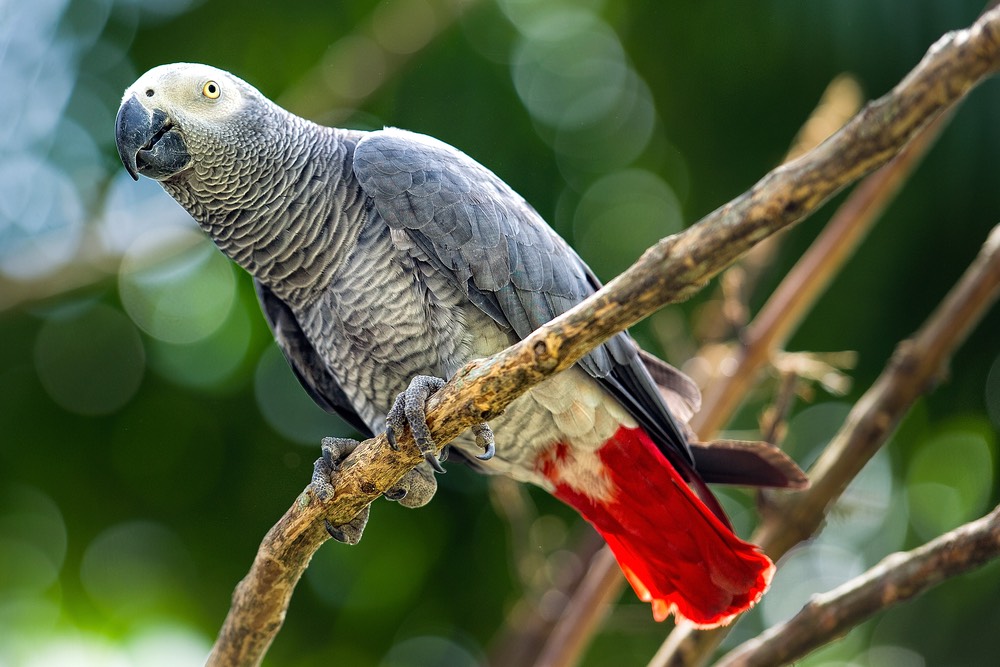A Bird Murder Witness: Why Parrots Are Such Great Mimics

A Michigan woman was convicted of first-degree murder on Wednesday (July 19) in a bizarre case that included psychics, mysterious death threats and a parrot as an alleged eyewitness.
As reported by The Detroit News, Glenna Duram was convicted in the May 2015 shooting of her husband, Martin Duram, in what police said was a botched murder-suicide. Several things made the case a national story, including that a relative of the victim said she predicted where the murder weapon would be found and that interfamily squabbling over the crime led to death threats among branches of the family. Perhaps most notable, however, Martin Duram's ex-wife claimed that his pet parrot was repeating the Durams' final argument.
"Shut up," the African grey parrot can be heard saying in a deep voice in a video allegedly taken a few weeks after the murder. He also says, "Don't [expletive] shoot."
Amazing anatomy
The bird's words didn't end up playing a real role in the court case: There was no way to prove the language didn't come from a television show or some other source besides the murder scene. Experts told Live Science in 2016 that a bird mimicking a scene it saw just once would be possible, though unlikely. [See Photos of a Clever Parrot Named Alex]
But the case does highlight an amazing facet of parrot behavior: the birds' ability to not only mimic words and sounds, but to also do so in an individual person's voice.
A few adaptations allow parrots to pull off this vocal feat. Some trace to the parrot's actual vocal tract. Birds produce sounds with an organ called the syrinx located just above their lungs in the respiratory tract. A complicated set of muscles surrounds the syrinx of parrots, said Irene Pepperberg, a researcher at Harvard University famous for her work on communication and cognition in parrots. (Her African grey parrot, Alex, who died in 2007, could say more than 100 words and even invented a few of his own.) Those muscles may give a parrot more control over the sounds it produces than typical songbirds have, Pepperberg told Live Science.
Parrots are also able to use their tongues and the opening and closing of their beaks to control sounds, just as humans use their tongues and mouths when speaking, Pepperberg said. The birds do have to come up with some work-arounds to manage sounds that require the use of lips or teeth, like "buh," "puh" or "la," she said. They use their esophagus to "burp" their Ps and Bs, she said, and they may press their tongues against their beaks rather than their teeth to make their L sounds.
Sign up for the Live Science daily newsletter now
Get the world’s most fascinating discoveries delivered straight to your inbox.
The birds can also mimic the pitch and inflection of human voices. Alex sounded a lot like Pepperberg when he talked, she said. Some birds kept by married couples will switch back and forth between registers to imitate the husband and wife, as Duram's parrot "Bud" is said to do in the video.
Made to mimic
The other adaptations that make parrots excellent mimics are cognitive. A 2015 study published in the journal PLOS One found that parrots have nuclei, or collections of grey matter in their brains, that look much like the nuclei responsible for vocalizations in songbirds. But on top of this neural machinery, parrots have an additional "outer shell" of nuclei. These networks, which evolved at least 29 million years ago, appear to play a role in parrots' remarkable vocal and mimicry abilities, the researchers said. The additional nuclei are better-developed in excellent mimickers, like African grey parrots, and are less well-developed in parrot species that don't pick up new sounds as easily, like the kea.
"What's fascinating about this is how much more we still have to learn," Pepperberg said.
In the wild, parrots may use their amazing vocal abilities to bond with their mates and to identify flock mates, Pepperberg said. Being able to learn new sounds throughout life probably helps a parrot bond with a new mate if its old partner dies; this learning ability may also help a parrot fit in with a new flock if it has to, Pepperberg said. (Flocks have their own dialects of calls and songs.)
"A single parrot in the wild is a dead parrot," Pepperberg said. "It can't eat and look for predators at the same time. It has to be part of a flock."
And that's why African grays and other pet parrots mimic human sound, Pepperberg said: to become part of the human flock.
Original article on Live Science.

Stephanie Pappas is a contributing writer for Live Science, covering topics ranging from geoscience to archaeology to the human brain and behavior. She was previously a senior writer for Live Science but is now a freelancer based in Denver, Colorado, and regularly contributes to Scientific American and The Monitor, the monthly magazine of the American Psychological Association. Stephanie received a bachelor's degree in psychology from the University of South Carolina and a graduate certificate in science communication from the University of California, Santa Cruz.










